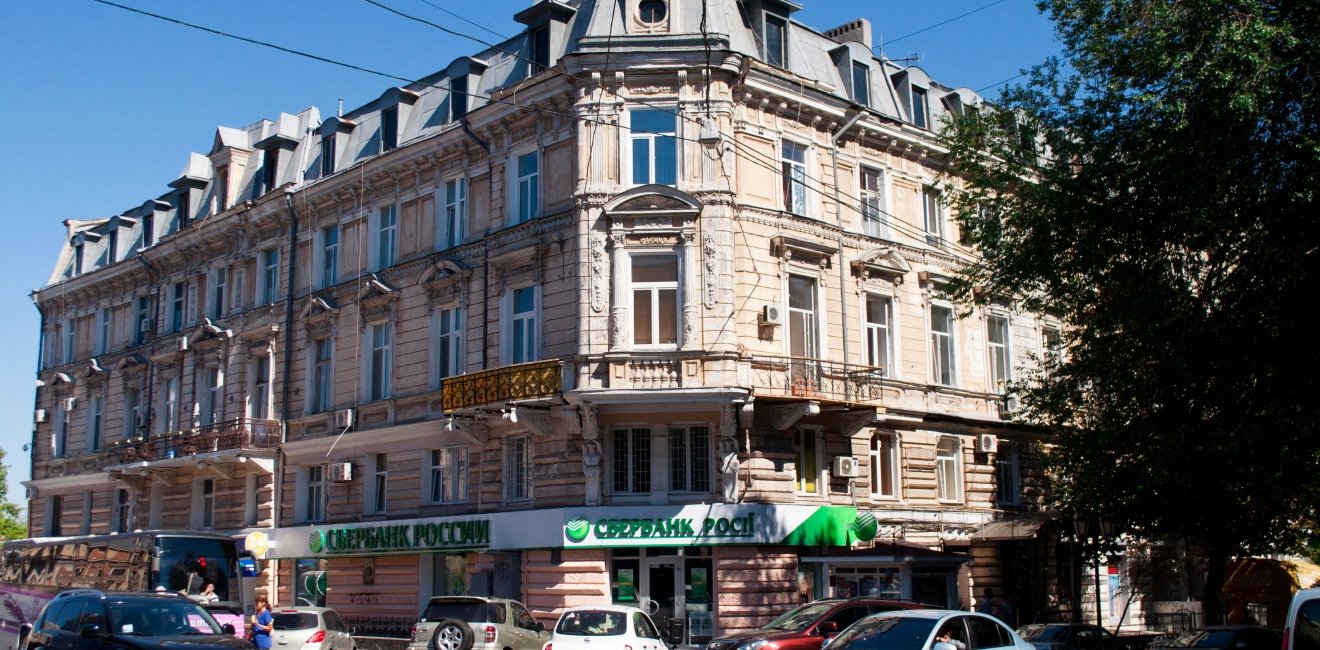
A blog of the Kennan Institute
BY VADYM SYROTA
In November 2007, in a move that received scant attention beyond banking’s C-suites, German Gref, formerly Russian’s minister of the economy and trade and a longtime ally of President Vladimir Putin, was appointed director of the Russian state-owned Sberbank. One month later, Sberbank acquired a bank in Ukraine. Ensuing years saw the juggernaut continue its international buying spree until by 2014 it had become Central and Eastern Europe’s largest bank and Europe’s third largest. Major acquisitions along the way included Volksbank International in 2011, a deal that encompassed all of VBI’s European assets except Volksbank Romania, and the 2012 purchase of Turkey’s DenizBank, including subsidiaries in Turkey, Austria, and Russia. But it is perhaps in Ukraine, with its weak banking system and lack of a firm regulator, that the hand of Russia’s biggest bank lies most heavily—and, for Russia, quite comfortably.
The expansion of Russian banks into the Ukrainian banking market truly got under way after the crisis of 2008–2009. The banks were not particularly interested in occupying the retail banking niche vacated by Western banks; their goal lay elsewhere. Unlike European banks, Russian banks have often served as a tool to spread political influence in alignment with Putin’s policies. A striking example is VTB Bank’s purchase of stock in Facebook and Twitter; evidence indicates that Russia used these platforms to affect the outcome of the U.S. 2016 presidential election.
The business model of these Russian banks operating in Ukraine was to attract interbank loans from the parent bank in foreign currency; such loans constituted 40 to 60 percent of the banks’ liabilities. Currency risks were for the most part unhedged. The funds were channeled to corporate borrowers, creating a potential “debt trap” that now threatens strategic industrial Ukrainian enterprises. For instance, a lender may use the debt as a bargaining chip to influence the borrower’s economic activity, especially if the borrower is confronted with the threat of hostile takeover.
Despite the obvious economic and political risks posed by Russian banks insinuating themselves into the Ukrainian financial sector, Ukraine’s banking regulator hasn't developed a clear strategy for dealing with the problem. The situation hasn’t changed for years: it is the same today, under a Western-oriented government in Kyiv, as it was during the presidency of Russia-backed Viktor Yanukovych, which ended with the Maidan. Today, Russian state-owned banks hold a significant stake in the Ukrainian banking market. As of October 1, 2018, assets in these banks accounted for approximately 7.7 percent of local banks’ total assets, with the liabilities of corporations representing about 2 percent of their total liabilities (the liabilities of individuals accounted for 2.4 percent of their total liabilities).1
Moreover, the market positions of Russian state-controlled banks’ subsidiaries in Ukraine have remained sound despite some earlier downtrends. Local clients started withdrawing deposits from these banks with the onset of Russian aggression in eastern Ukraine: in the first nine months of 2014, individual deposits in Sberbank and VTB declined by half. In addition, the local economic downturn of 2014 caused by the annexation of Crimea and hostilities in the Donbas hit the banks’ financial standing. These lenders have sustained greater losses than other local banks: at the beginning of the fourth quarter of 2018, Russian state-controlled banks registered losses of U.S. $315 million. That situation owed mostly to the poor quality of their credit portfolios. As of October 1, 2018, approximately 60 percent of Sberbank’s credit portfolio was in lowest-ranked loans. The figure was 85 percent for Prominvestbank and 91 percent for VTB.2
To solve this problem, which threatened the banks’ solvency, an uncommon banking tool was used. The earlier interbank debts extended by the parent banks were converted by the subsidiaries into share capital. In simple terms, these financial institutions changed the legal character of loans that had been earlier allocated in an opaque way and rendered them as nonperforming loans. But such a maneuver allowed the subsidiaries to avoid investing liquid cash funds. According to analysts’ estimates, the total volume of such conversion of Russian state-owned banks’ loans amounted to U.S. $3.49 billion in 2014–2016. Moreover, the conversion of loans into share capital resulted in the banks’ market share increasing from 10 percent to 20 percent of total Ukrainian banks' authorized (statutory) capital.3 The trend has become painfully apparent in the context of Russia’s aggression toward Ukraine and the sanctions imposed on the Russian financial system by Ukraine’s Western allies. However, permissiveness or inaction on the part of Ukraine’s regulator can’t always resolve the mounting problems. After a huge liquidity crisis resulting in inability to meet clients’ demands, at the end of November 2018 the National Bank of Ukraine declared VTB Bank’s subsidiary insolvent.
Russian state-owned banks operating in Ukraine thus appear to have self-immunized against sanctions imposed by local authorities. They are in a comfortable position, carrying on business as usual. A few banks and individuals have made successful attempts to withstand the economic expansion of Russia into Ukraine’s banking system and business sector. For example, in November Ukraine’s state-controlled Oschadbank was awarded $1.3 billion by an international arbitration court to compensate for business losses and asset degradation in Crimea in 2014 (Russia does not recognize the ruling). Moreover, Igor Kolomoisky, one of Ukraine’s richest businessmen and former owner of the nationalized Privatbank, initiated a lawsuit claiming loss of assets in Crimea following Russia’s annexation; the suit resulted in a court order to seize shares of Russia's state-owned bank subsidiaries in Ukraine. The seizure was subsequently lifted by Kyiv’s Court of Appeals in a ruling that favored VB and Sberbank.4 However, individual successes are insufficient in the absence of a comprehensive state strategy to deal with Russia’s banks and their subsidiaries, which appear to be operating in Ukraine with impunity and beyond the reach of the regulator.
Notes:
- The author’s estimates, based on the central bank’s database, “Aggregated Ukrainian Banks’ Balance Sheet Indicators” (https://bank.gov.ua/control/uk/publish/article?art_id=34661442&cat_id=34798593).
- Ibid. These indicators are not the same as nonperforming loans but constitute their major part.
- Ibid.
- For more on this, see an October 3, 2018, article in Kommersant (in Russian): https://www.kommersant.ru/doc/3758839.
Author


Kennan Institute
After more than 50 years as a vital part of the Wilson Center legacy, the Kennan Institute has become an independent think tank. You can find the current website for the Kennan Institute at kennaninstitute.org. Please look for future announcements about partnership activities between the Wilson Center and the Kennan Institute at Wilson Center Press Room. The Kennan Institute is the premier US center for advanced research on Eurasia and the oldest and largest regional program at the Woodrow Wilson International Center for Scholars. The Kennan Institute is committed to improving American understanding of Russia, Ukraine, Central Asia, the South Caucasus, and the surrounding region through research and exchange. Read more

Explore More in Focus Ukraine
Browse Focus Ukraine
Talking to the Dead to Heal the Living

Ukrainian Issue in Polish Elections


